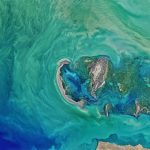 August 2, 2019 8:57 am
Published by Climate Extremes
August 2, 2019 8:57 am
Published by Climate Extremes
The Coupled Model Intercomparison Project (CMIP6) Model Analysis Workshop was held in Barcelona from March 25-28, 2019, and provided the first opportunity for results from CMIP6 models to be discussed and presented by the modelling community.
 July 11, 2019 11:22 am
Published by Climate Extremes
July 11, 2019 11:22 am
Published by Climate Extremes
CLEX researchers working with colleagues from the Hawkesbury Institute for the Environment revealed a method to predict the probability of tree mortality during droughts.
 May 30, 2019 10:31 am
Published by Climate Extremes
May 30, 2019 10:31 am
Published by Climate Extremes
CLEX researchers and colleagues revisit the quasi-equilibrium analytical framework introduced by Comins and McMurtrie (1993) and explore the consequences of specific model assumptions for ecosystem net primary productivity (NPP).
 May 24, 2019 1:25 pm
Published by Climate Extremes
May 24, 2019 1:25 pm
Published by Climate Extremes
New CLEX research finds land cover misclassifications over South East Asia based on remote sensing products have negligible impact on the outcomes of climate model experiments. However, land cover experiments that incorporate uncertainties must use large numbers of simulations to get robust results for rainfall and air temperature.
 May 2, 2019 1:24 pm
Published by Climate Extremes
May 2, 2019 1:24 pm
Published by Climate Extremes
CLEX researchers and colleagues from Australia, Germany and the US have quantified the effect of climate extremes, such as droughts or heatwaves, on the yield variability of staple crops around
the world. Overall, year-to-year changes in climate factors during the growing season of maize, rice, soy and spring wheat accounted for 20%-49% of yield fluctuations, according to research published in Environmental Research Letters.
 March 8, 2019 9:27 am
Published by Climate Extremes
March 8, 2019 9:27 am
Published by Climate Extremes
How wet the soil is before a storm can determine the amount of rain that falls. This research also produced some interesting findings for rainfall in Australia.
 March 6, 2019 4:23 pm
Published by Climate Extremes
March 6, 2019 4:23 pm
Published by Climate Extremes
New research suggests that the concept of maximum evaporation reported here is a natural attribute of an extensive wet evaporating surface. This provides a fundamental new insight as to how radiation, evaporation and temperature are interlinked.
 March 5, 2019 10:17 am
Published by Climate Extremes
March 5, 2019 10:17 am
Published by Climate Extremes
This research shows accounting for mesophyll conductance in climate models may have important implications for carbon and water fluxes in boreal regions.
 March 4, 2019 3:55 pm
Published by Climate Extremes
March 4, 2019 3:55 pm
Published by Climate Extremes
This work examines how climate projections are affected by using different subsets of available climate models. The researchers find several variables need to be optimised independently to get the best results.
 February 12, 2019 9:21 am
Published by Climate Extremes
February 12, 2019 9:21 am
Published by Climate Extremes
Calibration errors in the widely used Global Inventory Monitoring and Modeling System Version 3 NDVI (GIMMSv3.0g) dataset caused significant errors in the trends over some of Australia’s dryland regions. Though identified over Australia, the problematic calibration in the GIMMSv3.0g dataset may have effected dryland NDVI values globally. These errors have been addressed in the updated GIMMSv3.1g which is strongly recommended for use in future studies.










